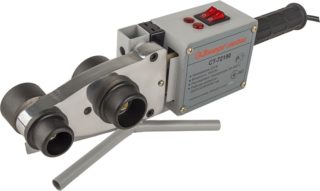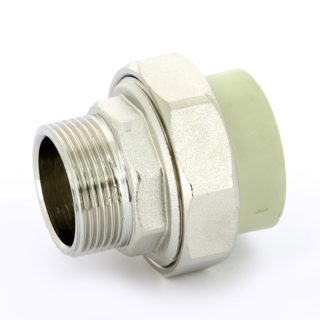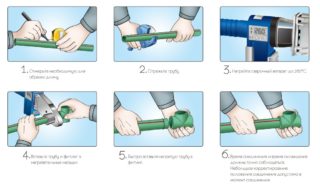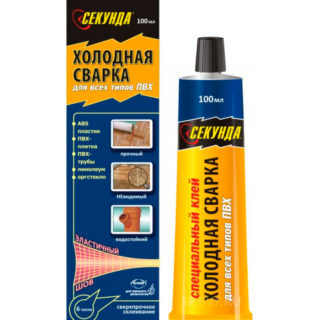The connection of polymer water pipes into a single line is carried out in two ways: using connecting elements (fittings) or by soldering. The latter option is more economical - no need to buy additional parts. But it requires special tools. If you know the intricacies of welding, it is possible to properly solder plastic pipes for home water supply with your own hands, without the involvement of specialists. It will also save the family budget.
Tools to get the job done

To connect plastic and propylene elements, the method of thermal diffusion is used - fusion when heated with a special soldering iron. It differs from a simple soldering tool in that it does not use copper electrodes, but steel nozzles. They are fixed in the holes on the heating element of the soldering iron. Temperature control is carried out using a thermostat located on the body.
For work with pipe elements made of polyethylene or polypropylene, you will additionally need:
- measuring instruments - tape measure, ruler, square, level;
- specialized scissors or pipe cutter;
- degreasing liquid.
Additionally, it is worth preparing a fine-grained sandpaper or a thin file. They will help make your cuts perfectly smooth.
Security measures
When working with a soldering iron, you need to follow safety precautions. Failure to do so will negatively affect the quality of the adhesion and can cause injuries and burns.
Observe the following rules:
- Place the hot soldering iron only on the stand.
- Wear gloves to protect your hands from burns.
- Carry out work in a well-ventilated area, because polymer materials emit harmful substances when heated.
The tips are Teflon coated to avoid carbon deposits. At the end of each welding process, the remaining polymer must be removed with a wooden spatula. It is not allowed to clean the cooled nozzles, as this can damage the coating and break the soldering iron.
Features of soldering water pipes

Before starting work, you need to choose the right technology. Three soldering methods are used for the connection:
- Coupling. In this case, couplings are used that are inserted between the abutting parts. The peculiarity of the process is that only the connection elements themselves are heated. Usually the method is used for pipes with small and medium cross-sections.
- Bell-shaped. Nozzles of various diameters are used. The ends of the parts are cut at an angle of 90 degrees and cleaned, and then inserted into the nozzle of the corresponding section. During the soldering, the ends of the two elements are heated, melted and joined. After docking, the parts must not be rotated.
- Butykova. At the same time, the ends of the two segments are welded along the entire plane. It is used to connect large pipes - with a diameter of more than 5 cm and a wall thickness of 0.4 cm.
If you need to solder reinforced pipes, you will need a special tool - a shaver. It is needed to clean the pipe from aluminum, which is hidden under the upper polymer coating. Further, the pipes are welded according to the standard method.
Sometimes threaded parts are required in the pipeline section. This fitting can be soldered to a suitable pipe joint.Welding work on pipes should be performed only at positive ambient temperatures.
Sequence of the welding process
First you need to prepare the pipes themselves. They are divided into pieces of the required size, the ends are leveled and polished, the joints are wiped with a degreasing liquid.
Using a thermostat, the required heating is selected, taking into account the difference in this indicator for polymers. You can clarify which specific pipes you are soldering by marking on the product itself. For polypropylene and polyvinyl chloride pipes (PP and PVC), heating is carried out up to 260 degrees, for polyethylene (HDPE) pipes - up to 220 degrees. The heated elements are connected to each other by inserting the pipe into the socket, coupling, or by joining the ends of the segments.
The duration of melting after bringing to the required temperature regime is determined depending on the section:
| Product diameter (mm) | Heating time to the required temperature (sec) | Adhesion period (sec) | Cooling time (min) |
| 16 | 5 | 8 | 2 |
| 20 | 6 | 9 | 2 |
| 25 | 7 | 10 | 3 |
| 32 | 8 | 12 | 4 |
| 40 | 12 | 20 | 5 |
| 63 | 24 | 25 | 6 |
| 90 | 40 | 35 | 8 |
After the joint has cooled, check the correctness of the work performed. The tightness of the welded section is checked by blowing and passing water. If the seam of the joint is made poorly, the seam is cut off, and welding is carried out again.
Soldering in hard-to-reach places and corners

If necessary, the pipes can be brazed at an angle. For this, special angle couplings are used. The angle is used to control the degree of bend. Purchase products from one manufacturer, this will ensure high adhesion of the elements to be joined.
Welding in hard-to-reach places is difficult for the layman. When working under the ceiling, the soldering machine must be hung on a hook. Sometimes it is necessary to replace a part in an already operating water supply system: in case of damage through which water drips, or a strong blockage. The easiest way is to solder the threaded fittings in those places where it is convenient to do it, and already plant a section of the pipe on them.
You can solder a polypropylene pipe, if water drips through a small crack, using the artisanal welding method. The gap is closed by the material from which the pipe is made. A hot nail or screwdriver is applied to the defective spot. The hole is covered with molten polymer. But this is a temporary option, the damaged area will still need to be replaced.
For a short time, the polymer product can be sealed using an industrial hair dryer. The joint is heated until the material softens. A clamp is applied to the pipe and tightened tightly.
Possible mistakes
- work with raw slices;
- unevenness of the docking parts;
- inaccurate alignment of the connected elements;
- too much force when joining;
- incomplete insertion of the pipe into the fitting connection;
- little or excessive heating of the parts to be welded;
- the presence of a reinforcing layer;
- changing the position of the elements after the plastic has cooled;
- using a soldering iron with nozzles contaminated with polymer;
- cleaning the cooled nozzles and the subsequent use of parts with a damaged teflon layer.
Sometimes on high quality materials, strong overheating does not give visual external defects. But at the same time, there is an internal deformation, when the heated plastic blocks the inner passage. This leads to rapid clogging and blockage of the water flow.
In addition to hot soldering, a cold welding method is used. The technique involves the use of a special solvent as an active soldering component, which softens the structure of the polymer. Due to its complexity, the method has not gained much popularity.










